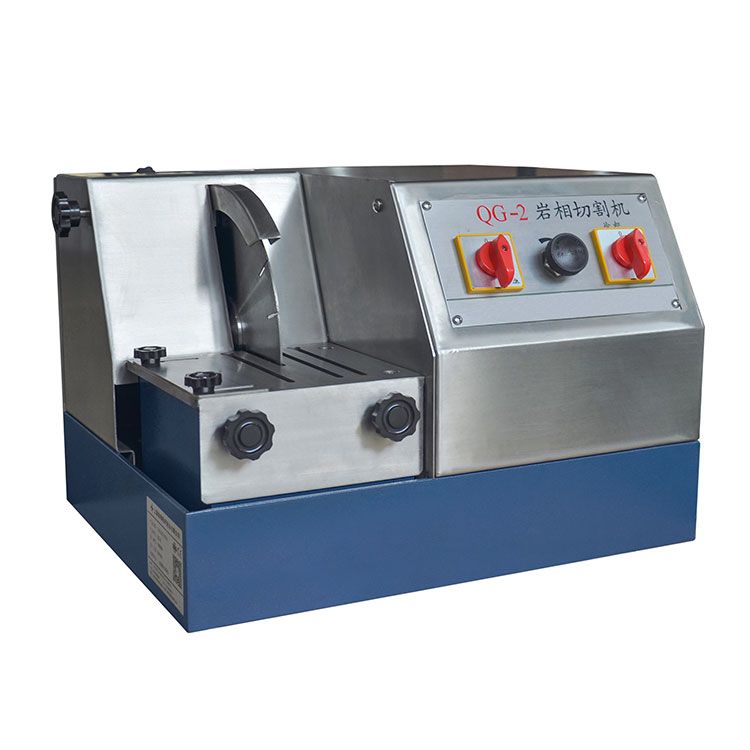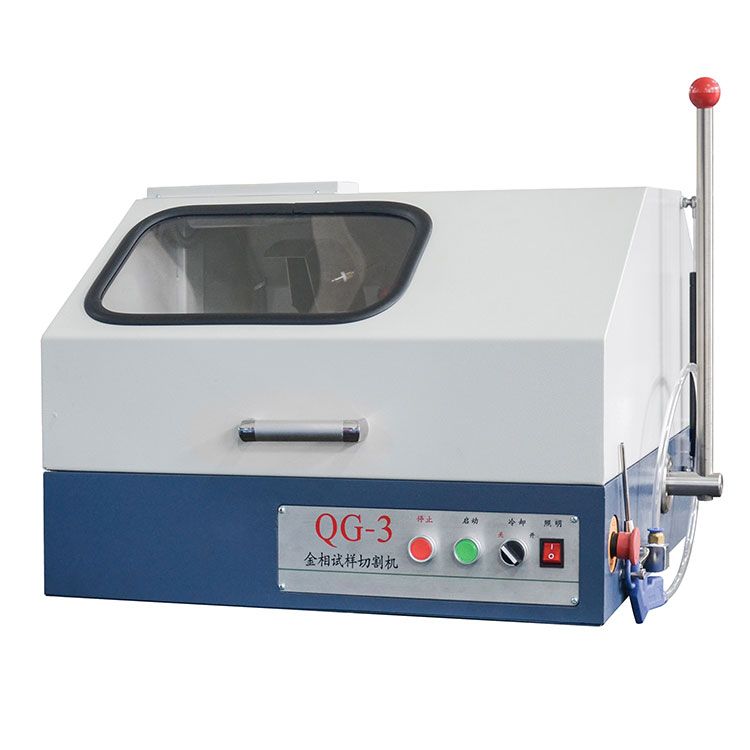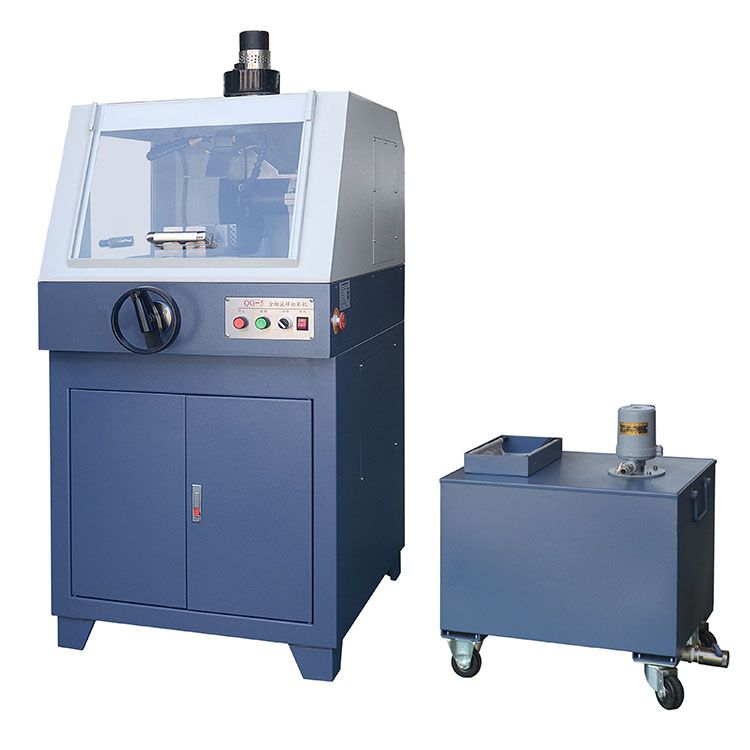Metallurgical sample preparation is a crucial aspect of materials science and engineering, aiding in the analysis of metals and alloys for various applications. One key step in this process is cutting samples for further examination. Metallurgical sample cutting machines play a pivotal role in this regard, providing precise and efficient cutting of specimens for analysis.
Fundamentals of Metallurgical Sample Preparation
Metallurgical sample preparation involves several steps, including cutting, mounting, grinding, polishing, and etching. Each step is critical in ensuring the accuracy and reliability of the analysis results. Proper sample preparation helps in revealing the microstructure of the material, identifying defects, and assessing its mechanical properties. Here we focus on the steps of cutting, knowing the machines and its working principles.
Types of Metallurgical Sample Cutting Machines
Metallurgical sample cutting machines are essential tools used in materials science and engineering for preparing specimens for analysis. These machines are classified based on various criteria, here are two types based on automation level, sample size and shape:
Based on Automation Level:
- Manual Cutting Machines: Require operator control and handling. These are simple and cost-effective but less consistent in cutting precision.
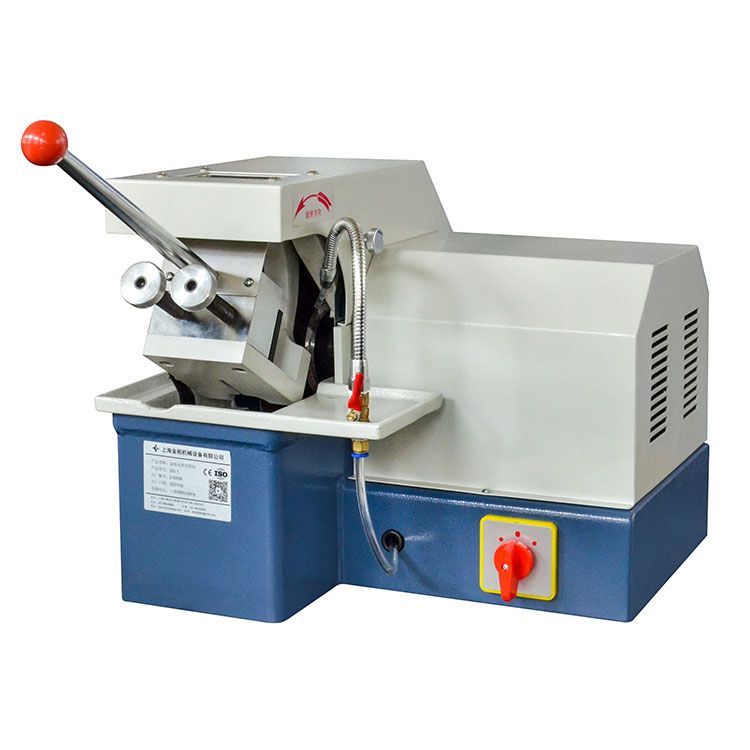
- Semi-Automatic Cutting Machines: Combine manual handling with automated cutting functions, providing a balance between control and automation.
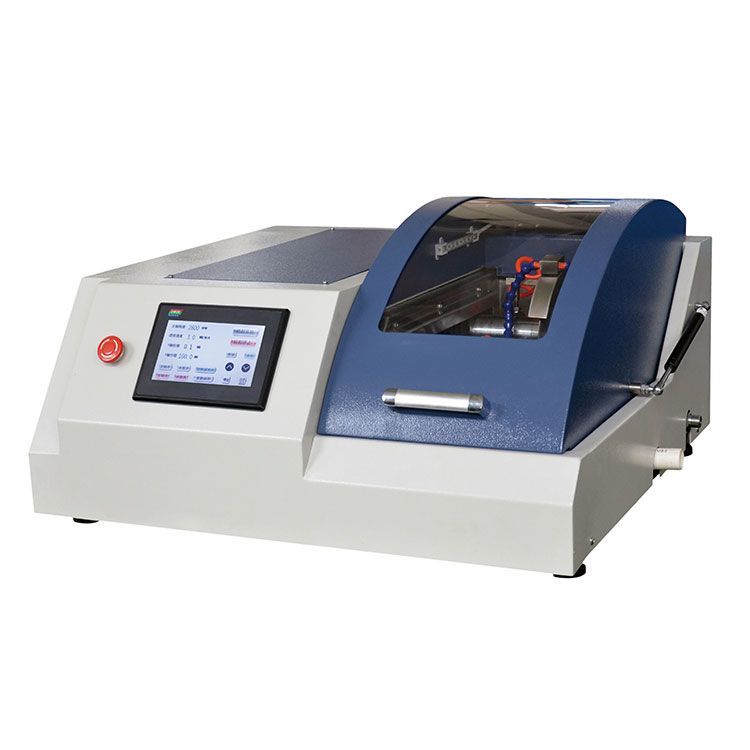
- Fully Automatic Cutting Machines: These machines perform the entire cutting process autonomously once programmed. They offer high precision, consistency, and are suitable for high-throughput environments.
Please selecting the appropriate cutting machine for specific metallurgical sample preparation tasks, ensuring optimal performance and accurate analysis results.
Based on Sample Size and Shape:
- Benchtop Machines: Benchtop machines are compact and suitable for small-scale sample preparation tasks, such as cutting small specimens or thin sections.

- Floor-standing Machines: Floor-standing machines are larger and more robust, capable of handling larger sample sizes and heavier materials with ease.
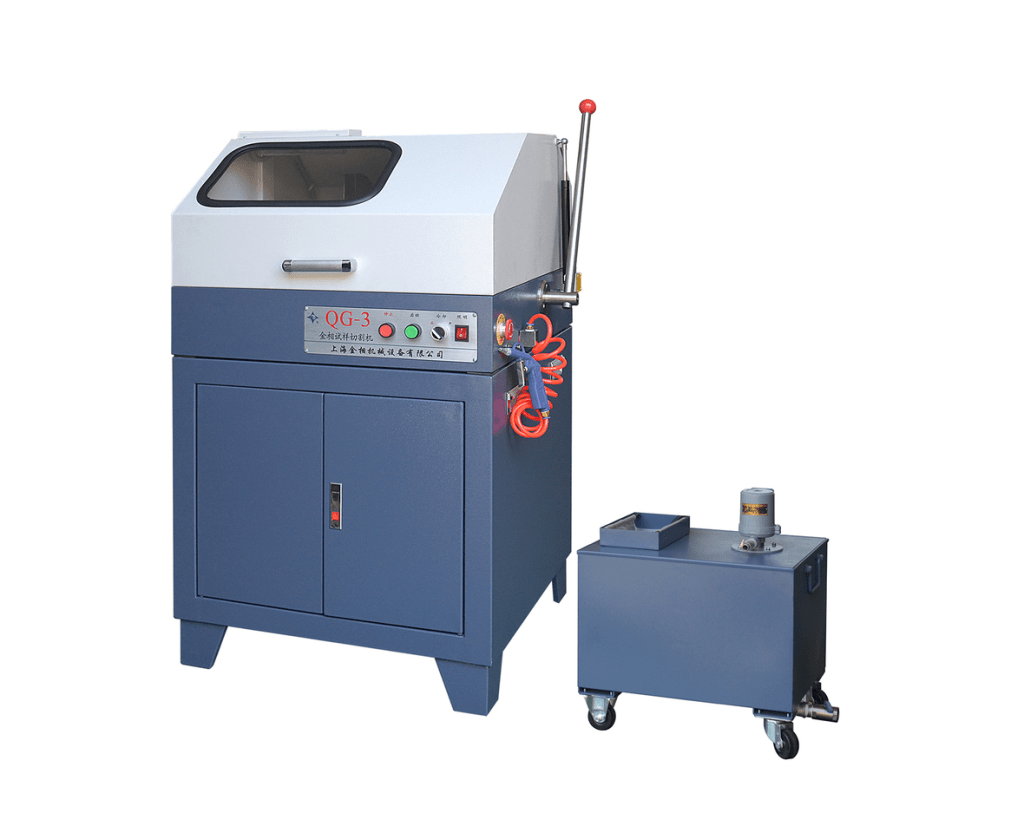
How Does Metallurgical Sample Cutting Machine Work?
Metallurgical sample cutting machines operate through a combination of precise mechanical components and controlled processes to achieve clean, accurate cuts. Here’s an overview of how these machines work, including their components and working principles:
Components of a Metallurgical Sample Cutting Machine
| Component | Function |
| Cutting Wheel/Blade | Performs the actual cutting of the sample. Types include abrasive wheels for hard materials and diamond blades for precision cuts. |
| Motor | Powers the cutting wheel or blade, often with variable speed control for different cutting requirements. |
| Cutting Table | Supports and positions the sample for cutting, often adjustable for different angles and positions. |
| Clamping Device | Holds the sample securely in place during the cutting process to ensure precision and safety. |
| Coolant System | Circulates coolant (water or oil) to reduce heat and friction, preventing thermal damage to the sample. |
| Enclosure/Cabinet | Houses the machine’s components, providing safety and containing debris generated during cutting. |
| Control Panel | Allows the operator to set and monitor cutting parameters such as speed, depth, and coolant flow. |
| Feed Mechanism | Controls the movement of the sample into the cutting wheel, can be manual, semi-automatic, or fully automatic. |
| Dust Extraction System | Removes debris and dust generated during dry cutting operations to maintain a clean working environment. |
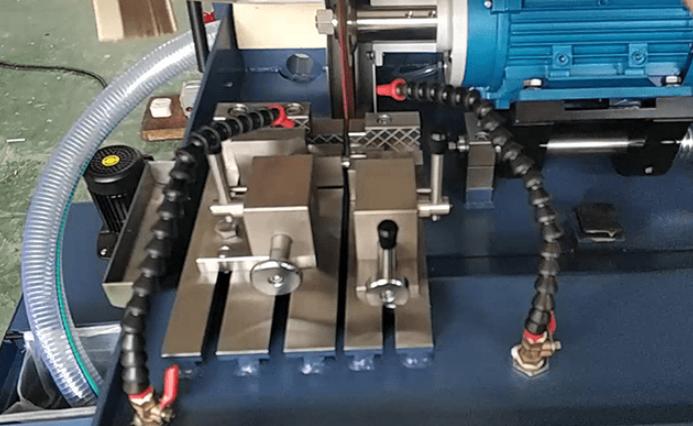
Working Principles of Metallurgical Sample Cutting Machines
- Setup and Preparation:
The operator selects the appropriate cutting wheel/blade based on the material of the sample.
The sample is securely clamped onto the cutting table.
- Adjustment of Cutting Parameters:
Parameters such as cutting speed, feed rate, and coolant flow are set on the control panel. These parameters depend on the material type, sample size, and desired precision.
- Initiating the Cutting Process:
The motor powers the cutting wheel, bringing it up to the set speed.
Coolant begins to circulate if a wet cutting method is used.
- Cutting Operation:
- Manual Operation: The operator manually advances the sample into the cutting wheel, controlling the feed rate.
- Semi-Automatic Operation: The machine assists with the feeding of the sample, but the operator still has some control over the process.
- Fully Automatic Operation: The machine performs the entire cutting process based on pre-programmed parameters, providing consistent and precise cuts.
- Cooling and Lubrication:
The coolant system continuously applies coolant to the cutting area, reducing heat and lubricating the cut to minimize friction and wear on the cutting wheel.
- Debris Management:
In dry cutting, a dust extraction system removes particles generated during the process.
In wet cutting, the coolant also helps in flushing away debris from the cutting area.
- Completion and Cleanup:
Once the cut is complete, the machine stops, and the sample is removed from the clamp.
The machine and the cutting area are cleaned to remove any remaining debris or coolant.
Conclusion
Metallurgical sample cutting machines are indispensable tools in materials science laboratories, facilitating the accurate and efficient preparation of specimens for analysis. Understanding the working principles and components of these machines is essential for ensuring optimal performance and reliable results in metallurgical research and industrial applications. If you are looking for a metallurgical sample cutting machines supplier, please feel free to contact Scopelab.
